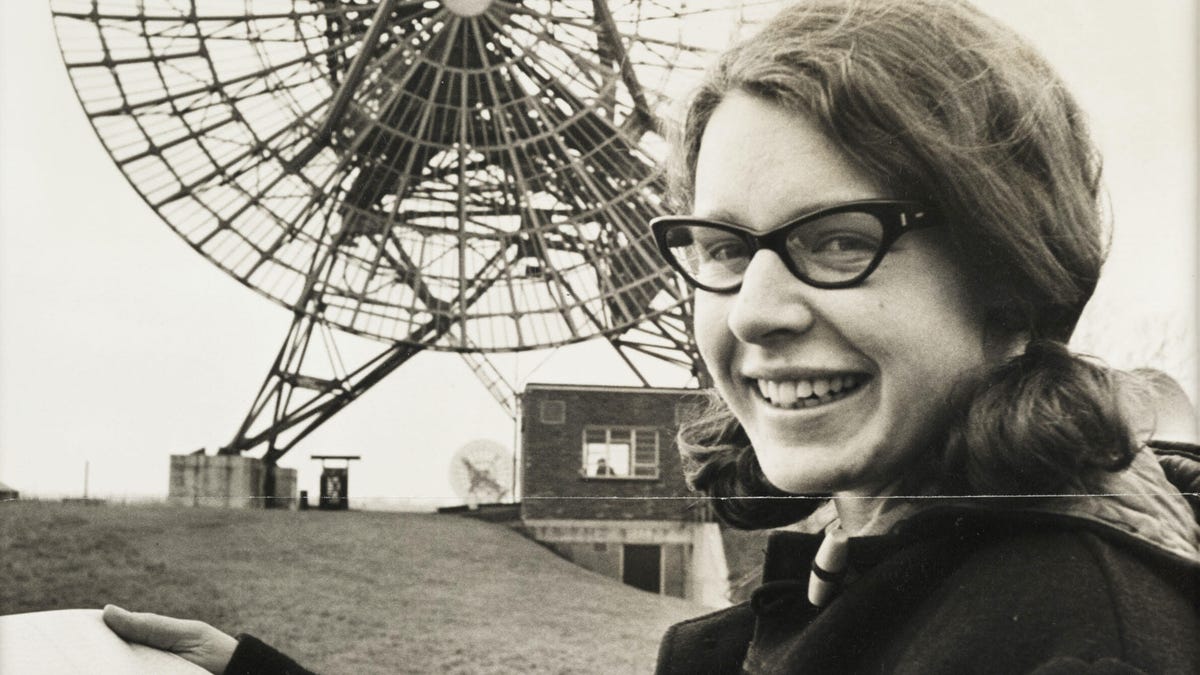The Mother of Pulsars: Jocelyn Bell Burnell and the squiggle that changed science
While working on her Ph.D., Bell Burnell analyzed over three miles of chart paper of radio signals from the stars. A great discovery was hiding in the ink.
In 1967, when she was just 24 years old, Jocelyn Bell Burnell saw a quarter-inch-long "squiggle" on a piece of paper that would change her life and reshape the course of astrophysics.
Bell Burnell was working on her Ph.D. at Cambridge at the time, reading signals from a radio telescope in the hope of finding quasars -- supermassive black holes, millions of times the size of our sun, that spew out huge amounts of energy from billions of light-years away.
As part of her Ph.D. research, Bell Burnell had helped build a telescope to receive these signals from across the universe. It was known as the Interplanetary Scintillation Array -- a radio telescope made up of 2,000 metal antennas and 120 miles of cable and wires, all strung up on more than 1,000 wooden posts. The entire thing covered an area the size of 57 tennis courts in the fields near Cambridge University. Once it was switched on, it was her job to read the recordings it produced -- squiggly lines made by a pen tracking along rolls of chart paper, kind of like a lie-detector test. Small lines that represented radio signals coming from beyond our world.
Over the course of her work on the project, the telescope spat out more than three miles of this chart paper. But Bell Burnell was a meticulous student, and she analyzed every single inch. And that's what helped her spot it. A squiggle that she might have missed in all the interference that appeared in her telescope readings. A little pulse that repeated in perfect time, always coming from the same part of the sky.
"There was a squiggle that I couldn't name and classify," she told me over the phone from the UK. "It was very rare, often not there. But it was there often enough that my brain said on one occasion, 'You've seen something like this curious squiggle before, haven't you? You've seen it from this bit of the sky, haven't you?'"
"For days and weeks, that squiggle didn't repeat. … And then finally, after a month of trying, I caught it. And it turned out to be a series of pulses, about one and a third seconds apart. Whatever it was, was going blip, blip, blip."
Bell Burnell hadn't discovered another quasar, and it wasn't interference from a car traveling on the nearby road. She had discovered a celestial object behaving in a way that had never been observed before. She had discovered pulsars.
Her discovery would reshape the course of science and would ultimately see her supervisor Antony Hewish awarded the Nobel Prize in physics in 1974. Despite being the person to make the discovery, Bell Burnell was overlooked for the award.
In episode 3 of Making Space: The Female Frontier, we track the course of Bell Burnell's greatest achievement and what it meant for women in the field of space discovery, and for the scientific world as a whole. Bell Burnell recounts the moment she saw that tiny squiggle and what it has meant for her since.
You can listen to the episode The Mother of Pulsars in the player in this story above. Or search for Making Space: The Female Frontier in Apple Podcasts, Spotify, Stitcher or wherever you listen.
See also: These telescopes work with your phone to show exactly what's in the sky


